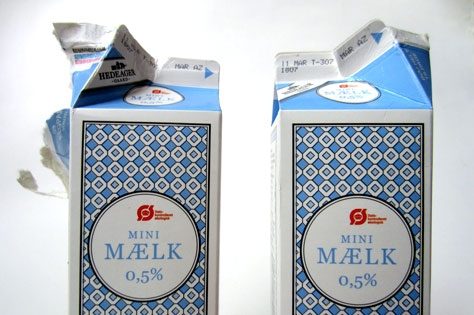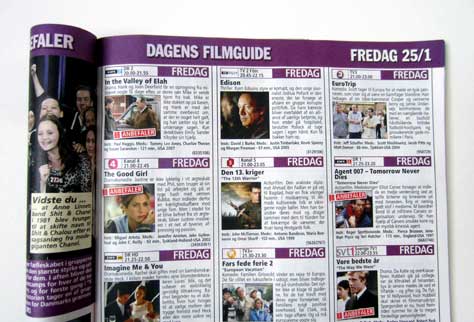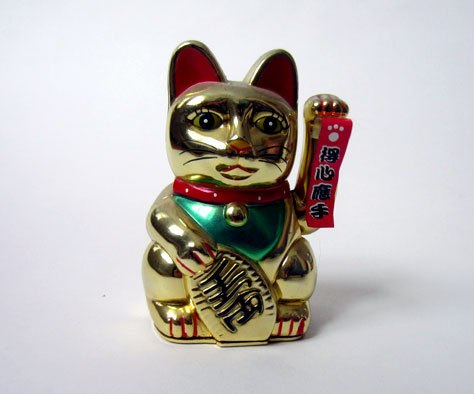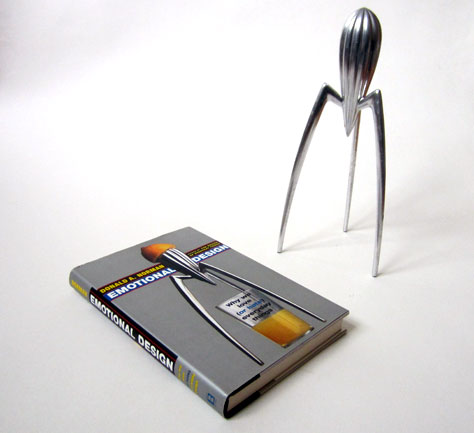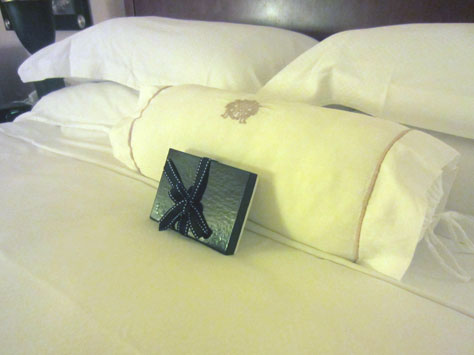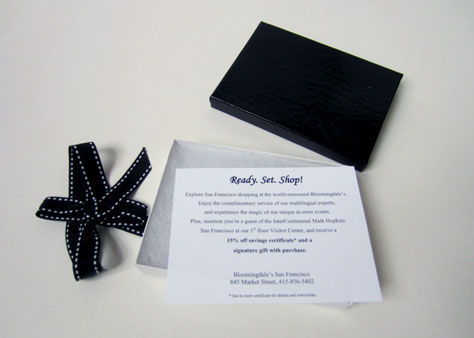First, here is a quick example of design dissonance in its purist form. (Other examples will follow later.)
My growing collection of souvenirs of design dissonance includes a packet of Japanese bath salts, shown in Figure 1. This is the stuff you dump into a hot tub to help you relax, soften your skin, and make you smell good. These bath salts were made with green tea and milk.
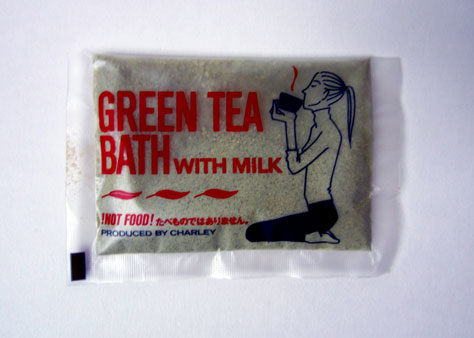
The problem is, the packet actually shows the profile of a woman drinking a cup of tea. From an art director’s point of view, this might be understandable: both tea and milk are things you drink. But hey, these are bath salts! So, the manufacturer has thoughtfully added a disclaimer at the bottom of the packet: !NOT FOOD! The illustration on the packet is a great example of visual design that defies all common logic. Why send out visual signals that create a problem that has the potential to make people very, very sick?
Five Kinds of Design Dissonance
The key word when discussing the effect of design dissonance is misleading. Dissonance can manifest itself in several ways. Here are the basic kinds of design dissonance as I see them:
- graphic elements that mislead
- shapes and sizes that mislead
- words that mislead, or create inappropriate associations
- actions, colors, or other elements that don’t easily cross cultural boundaries
- functionality that runs counter to users’ expectations
If you spot any of these in your own work, I urge you to do your best to eliminate them. At best, design dissonance can make your product the butt of a joke; at its worst, it can kill people. Now, I want to share some of my favorite examples of design dissonance.
Everyone Reacts to Design Dissonance
When I was first starting out as a young stage director back in the 1970s, I produced a drama in which a radio played a key role. It was constantly being turned on, turned off, turned up, and turned down by members of the cast. Rather than giving our overworked sound engineer hundreds of extra cues to handle, my solution was to gut the radio, install a better speaker, and install a working volume control knob. Then, the sound engineer could simply switch on the tape of a radio program up in the sound booth and leave it on throughout the show. So that’s exactly what the tech staff did. But there was a catch.
For some incomprehensible reason, if someone wanted to raise the radio’s volume, they had to turn the knob counter-clockwise, which is the exact opposite of how these things work in real life. When I complained to my tech crew, they told me that replacing the potentiometer would be difficult—and no one would notice anyway. I should have put up a fight, but this seemed too minor a point to make a fuss over. Well, I was wrong. Not only did people notice, two newspaper reviews commented on this anomaly—one even making the interesting argument that this subtle reversal was symbolic of how modern society was turning social values on end. But in truth, it was just a dumb design flaw. I’ve since learned to pay attention to these kinds of things because, minor as they may appear, someone always notices. (Don’t believe me? Search for goofs on IMDB.)
This is a classic example of functionality that runs counter to expectations. Not only was it difficult for the actors (our users) to remember how this goofy system worked, it was clear that people observing their actions were also aware of this anomaly.
Misdirection for Fun and Profit
Many examples of design dissonance relate to shape and size. For example, I recently bought a bottle of aspirin. According to the label, there were 100 tablets in the opaque, plastic container. But when I opened the bottle, I saw that it actually had room for 500 or more tablets. Although I knew exactly how many tablets I had purchased, the size of the package had clearly influenced my choice. Because I know from experience how long I can expect a bottle of this size to last in my house, my choice wasn’t based just on the quantitative information on the label, but on qualitative information as well—the bottle’s size. Another design mismatch—in this case, probably a cunningly well-choreographed one on the part of the aspirin company.
In fact, designing large packages for small items has become the norm for many products—from pharmaceuticals and cosmetics to candies and breakfast cereals. (“Warning: contents may settle during shipping.”) Today, potato-chip bags are filled with air to protect the contents. But this technique also makes the bag look as though it holds many more chips. Hence, I appreciate the honesty of Pringles, whose machine-made chips come neatly stacked in a round cardboard tube. No wasted space. Lots to eat. Although I hear from product managers at Pringles that people tend to think that Pringles chips are overpriced. (“Folks expect a big bag for the same price.”) It is sad to think that honesty may not always be the best design policy when it comes to retail packaging.
Language and Labeling
The use of language on product’s labels is another common source of design dissonance. For example, my supermarket sells a mango chutney, shown in Figure 2, that is actually made primarily of pineapple. To be fair, if you read the list of ingredients carefully, you’ll find that there is a bit of mango in the mix. However, thinking in terms of design dissonance, calling a product mango when it is actually made from another fruit is quite odd. Why not just call this product Pineapple Chutney?
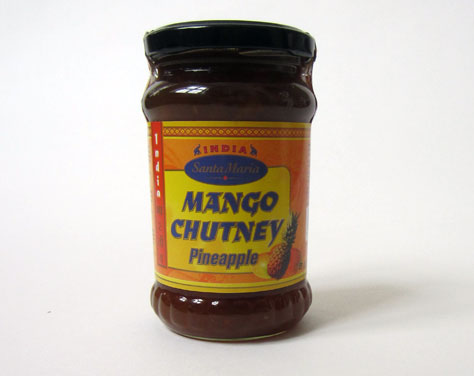
A quick search of the Internet will present countless examples of badly named products. In most instances, humor arises from an inadvertent foray into the world of design dissonance.
Here’s a fairly harmless example that will undoubtedly cause native English speakers to smile. The Danish candy manufacturer Gajol has created wine gummies called Spunk, shown in Figure 3. Apparently, the company didn’t know that, in English, spunk is slang for semen. The somewhat amoeba-shaped figure on the package is organic enough to be mistaken for spermatozoa by the uninitiated. Both the name and related graphic are especially funny when you think that this is candy for children. Okay, I admit this isn’t a major design flaw, but it certainly is funny.
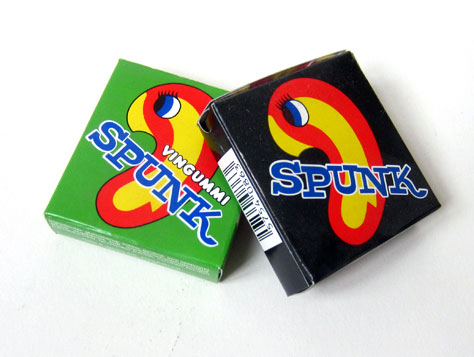
Danes are proud of their ability with languages, which is perhaps why they so often forget to ask a native speakers of other languages for an evaluation of a new brand name. A case in point: one of their largest dairies, Arla, has tried for years to market a line of products called Cheasy. Check out the definition of cheasy on Urban Dictionary. Not surprisingly, these products don’t do well in English-language markets.
Of course, every country makes similar mistakes, so perhaps it’s unfair to pick on the Danes. Even more frequently, companies forget their business context. The label Forgot password? on the international Alzheimer’s site is a particularly sad example.
